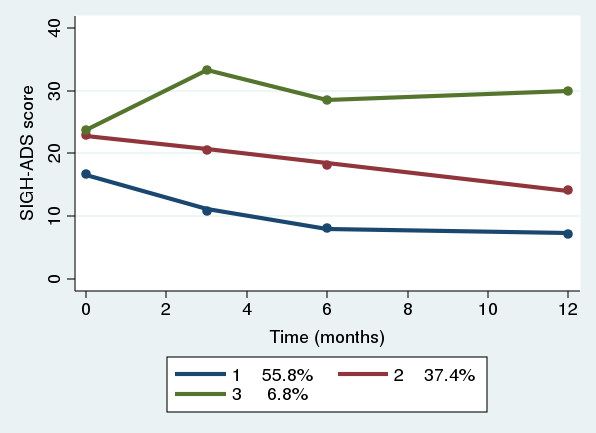Presenting Author:
Principal Investigator:
Department:
Psychiatry and Behavioral Sciences
Keywords:
Keywords: Postpartum depression, depression phenotype, primary care practice, women’s mental health
Location:
Ryan Family Atrium, Robert H. Lurie Medical Research Center
C120 - Clinical Women's Health Research
Seven Maternal Characteristics Determine the 12MonthCourse of Postpartum Depressive Symptoms
Background: Postpartum depression is a heterogeneous disorder in phenotype and etiology. Characterizing the longitudinal course of depressive symptoms over the first year after birth and identifying variables that predict distinct symptom trajectories will expedite efficient mental health treatment planning. This study aimed to determine 12-month trajectories of postpartum depressive symptoms, identify characteristics that predict the trajectories, and provide a computational algorithm that predicts specific trajectory membership. Methods: A prospective cohort of women delivering at an urban women’s hospital in Pittsburgh, PA (2006-2011) was recruited. Women with a postpartum depressive disorder (n=618) completed symptom severity assessments at 4-8 weeks (intake), and at 3-, 6-, and 12 months. Women were ineligible if they had bipolar, psychotic, or substance use disorders or a suicide attempt within six months of pregnancy. Women were predominantly Caucasian (73.3%), married (55.5%) and college educated (41.3%). Clinician-administered interviews of depressive symptom severity, medical and psychiatric history, function, obstetric outcomes and infant status were completed. Analyses identified three distinct trajectories of depressive symptoms: 1) gradual remission (55.8%), 2) partial improvement (37.4%), and 3) chronic, non-remission (6.8%), which were predicted with 69.3% accuracy. Key predictive characteristics included depression diagnosis alone, depression with comorbid anxiety disorder, maternal age, parity, global functioning, number of chronic illnesses, and physical abuse during adulthood. Conclusions: Seven maternal characteristics predicted membership in the three trajectories with nearly 70% accuracy. The trajectory groups comprise clinically relevant subgroups with the potential for tailored treatments to reduce the disease burden of postpartum depression.

